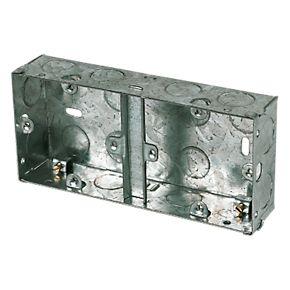Hi All,
I have a two single sockets side by side, one is a ring main with two spurs coming off it, one to the single socket directly next to it (double flush backbox) and another to a double socket a few metres away.
I don't see this being much different from a ring main double socket with an additional double socket spurred from it, other than two single sockets side by side looking odd. But just wanted to double check there were no safety concerns!
Thanks,
I have a two single sockets side by side, one is a ring main with two spurs coming off it, one to the single socket directly next to it (double flush backbox) and another to a double socket a few metres away.
I don't see this being much different from a ring main double socket with an additional double socket spurred from it, other than two single sockets side by side looking odd. But just wanted to double check there were no safety concerns!
Thanks,



